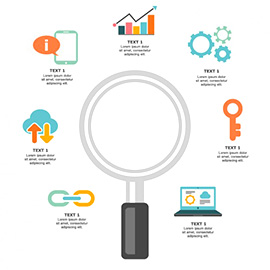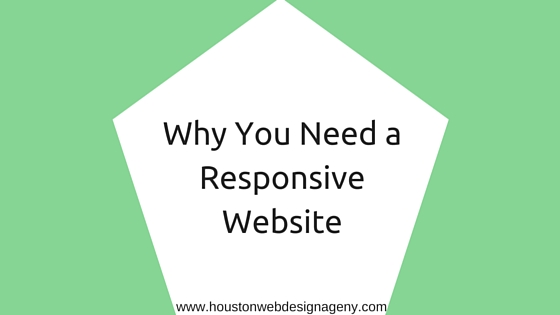Because there aren’t nearly enough acronyms in the digital marketing biz (SEO, CTA, CRM, or PPC anyone?) let’s throw one more in the mix:
CRO – Conversion Rate Optimization
According to Hubspot, CRO is: “the process of creating an experience for your website visitors that’ll convert them into customers.”
Or, to put it another way,
“With conversion rate optimization, you evaluate your website’s sales funnel to identify ways you can improve your site in order to get a higher percentage of people to sign up for your product or service.”
–Neil Patel @ Quicksprout
Basically, CRO is how effectively and efficiently you are able to turn your website’s traffic from mere visitors into committed buyers or participants.
Sure, you could just play the numbers game and try to wrangle more customers by driving as much traffic as possible to your site.
But instead of sinking ever more of your marketing budget into PPC ads, you can utilize CRO so that each visitor you are already getting is that much more likely to convert.
Think of it as the quality over quantity approach.
Why should CRO be a part of your digital marketing strategy?
Because it not only offers the potential to increase your revenue; it can also significantly lower how “expensive” each new customer is (a.k.a cost per acquisition). So much so that doubling your conversion rate cuts your cost per acquisition in half.
That bears repeating.
Doubling your conversion rate cuts your cost per acquisition in half.
To sum up, CRO can really help your bottom line. Small changes in design, layout, copy, even CTA button color or wording can have a big impact on who follows through and who takes their cursor elsewhere.
Micro vs. Macro and Which Matters More
No CRO discussion is complete without mention of micro and macro conversions.
Macro conversions are the primary goals of your website–the most important thing you want visitors to do. Think generating revenue (making a sale), requesting a quote or free trial, or filling out a Contact Us form. Macro conversions are what directly impact your bottom line.
Micro conversions are small decisions or steps that help nudge your customers toward that ultimate goal. Things like downloading a white paper, subscribing to a blog, or clicking through an email might not bring in actual dollars, but they move dial that much closer to the desired end point.
So which matters more?
You could argue that macros are what actually translates into money, ergo they are more important.
However, micros are what help make the macros happen. Optimizing your micro conversions contributes to the overall usability and “awesomeness” of your site. Plus, micro conversions help you assess buyer readiness, or intent, and help you find points of friction in a buyer’s journey.
So the answer to the question is neither. Or both. You want to make sure you don’t get too bogged down in the granular micros; but you also don’t want to have macro tunnel vision either. A good CRO strategy understands and accounts for the symbiotic nature the two components and should always try to maintain balance.
CRO Basics to Get the Ball Rolling
How do you actually get started with CRO? You could dive into A/B testing pretty much anything on your webpage: color, spacing, alignment, layout–you name it and you can test it.
But rather than just going in blind, we suggest trying these three things first:
1. K.I.S.S. Keep It Simple Stupid
One of the most effective, optimize-y things you can do for your site is to simplify it. The more easily your customers can navigate around, the more easily they can find the information they are seeking and the more likely they are to stay on your site and take the steps you want them to take.
So take a good honest look at your site and see where you can trim the fat and clear the clutter. Less really is more when it comes to webpages.
Check out this post or this post for more on how to create a user-friendly website.
2. Make sure you are using responsive web design
This really should go without saying, but we’ll say it anyway.
Your website is being viewed on a variety of different devices. A webpage that looks and works great on a laptop can be nearly impossible to navigate on a 5 inch phone screen. Plus, our mindsets and usage habits are entirely different depending on what sort of device we are using.
Since we’ve written about this topic HERE and HERE, we won’t harp on this too much, but making sure your site is mobile-friendly is ABSOLUTELY critical to getting those conversions (not to mention getting ranked by search engines…but let’s not digress).
3. Segment Your Strategy
Just as your site is being viewed on different devices, it is also being viewed by different types of potential customers–not all of whom are created equal.
Some of your site traffic is not nor will ever be ready to buy what you are selling. Some may just be looking for relevant info and might buy at some point. Some have their wallets out and credit cards ready.
Rather than just taking an umbrella approach, pick one group/customer type to focus your optimization efforts on–ideally the ones that matter most to your business.
Once you’ve done these general things, let the testing begin!
Need help getting started with CRO? Perhaps you’d rather leave the testing to the professionals. The Houston Web Design Agency handles all things digital marketing–including CRO–and we would love to help you get started. Just fill out our contact form or call us at 281-764-9070, anytime!








